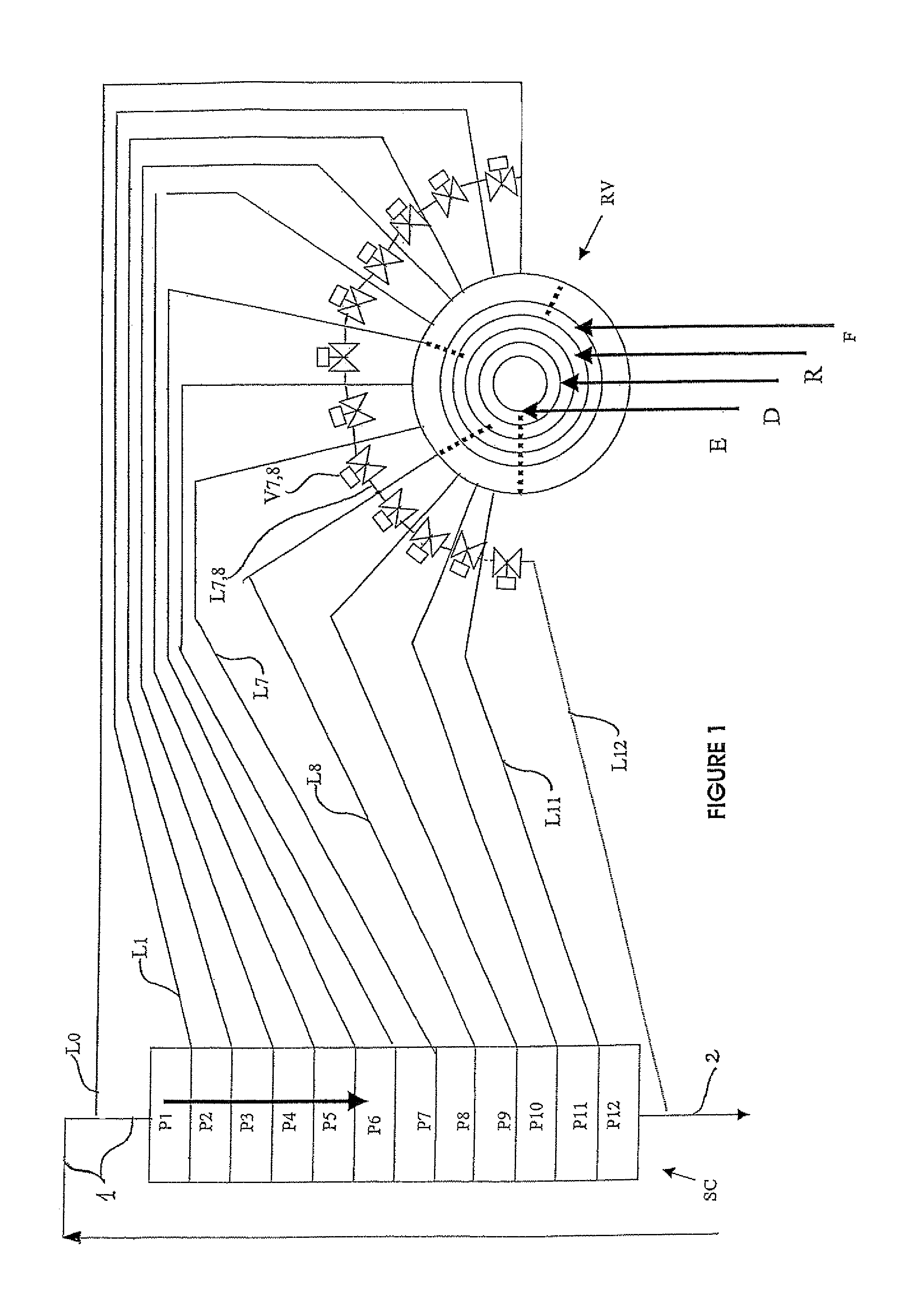Simulated moving bed separation process and device
a technology of moving bed and separation process, which is applied in the field of separation, can solve the problems of increasing the risk of internal recirculation inside the same tray, discontinuities of composition detrimental to ideal operation, and not being completely satisfactory
- Summary
- Abstract
- Description
- Claims
- Application Information
AI Technical Summary
Benefits of technology
Problems solved by technology
Method used
Image
Examples
Embodiment Construction
[0044]The invention therefore presents a simulated moving bed separation device and process.
[0045]It relates in particular to a device permitting the separation of at least one sought compound from a mixture containing this compound, by adsorption on a simulated moving bed comprising:[0046]at least one enclosure or column, comprising a plurality of beds of adsorbents (Ai), two consecutive beds of adsorbents being separated by at least one tray (Pi) for collection / redistribution of the principal fluid and injection / extraction of secondary process fluids, the tray comprising one or more distribution / extraction / mixing, or “DME” panels, permitting the distribution, extraction and / or mixing of these fluids,[0047]at least one multi-way rotary valve (RV),[0048]a plurality of conduits Li (L1 . . . L7, L8, . . . L11, L12 . . . ) linking said multi-way rotary valve to said trays Pi,[0049]for at least some (often more than 50%) of the conduits Li (for example L7 or L8), means for connecting tw...
PUM
| Property | Measurement | Unit |
|---|---|---|
| angle | aaaaa | aaaaa |
| adsorption | aaaaa | aaaaa |
| concentration | aaaaa | aaaaa |
Abstract
Description
Claims
Application Information
 Login to View More
Login to View More - R&D
- Intellectual Property
- Life Sciences
- Materials
- Tech Scout
- Unparalleled Data Quality
- Higher Quality Content
- 60% Fewer Hallucinations
Browse by: Latest US Patents, China's latest patents, Technical Efficacy Thesaurus, Application Domain, Technology Topic, Popular Technical Reports.
© 2025 PatSnap. All rights reserved.Legal|Privacy policy|Modern Slavery Act Transparency Statement|Sitemap|About US| Contact US: help@patsnap.com



